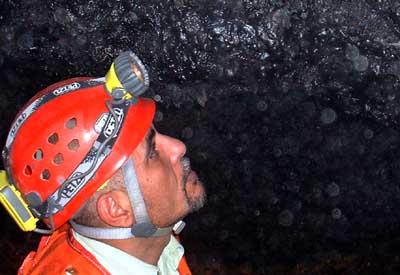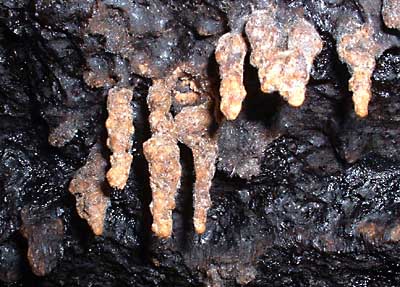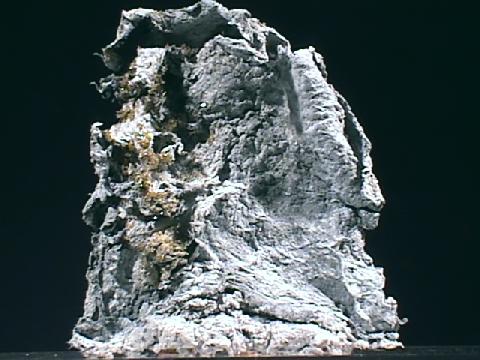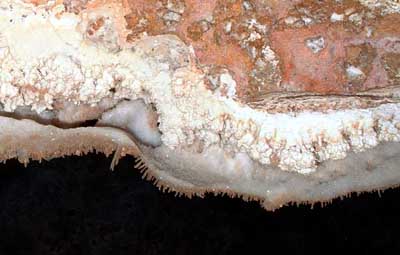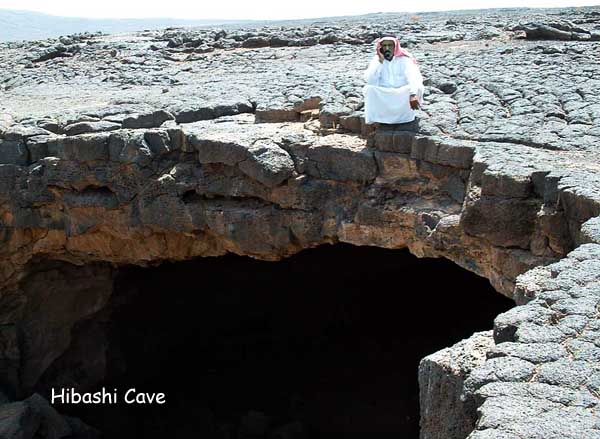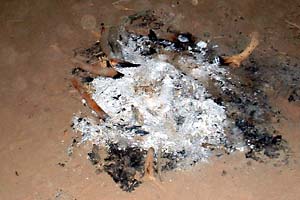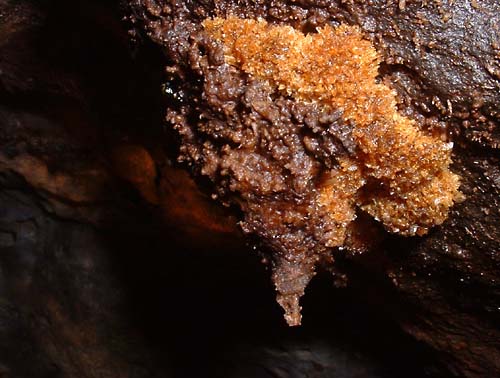CURIOUS MINERALS FOUND IN SAUDI CAVES
© 2005 and 2012 by John and Susy Pint - PHOTOS BY JOHN PINT EXCEPT WHERE OTHERWISE INDICATED
Updated December, 2013
Professor Paolo Forti, former president of the U.I.S. (International Union of Speleology), visited several of Saudi Arabia’s limestone caves in 2003 at the invitation of the Saudi Geological Survey (SGS). Although the purpose of his visit was to assist the SGS in evaluating these underground caverns for possible development into tourist caves, he was also interested in investigating what kind of secondary minerals might be found in Saudi Arabia’s caves, since few studies of this sort have been carried out in the Kingdom. Tourist caves will add to the many other natural attractions of this country leading even more people to look for hotel deals in Saudi Arabia.
As co-author of the book Cave Minerals of the World, Prof. Forti is recognized as an authority in this field. So, it is no surprise that he returned to Italy weighed down with many small samples taken from Saudi Arabia’s limestone caves as well as from lava-tube caves, which are found in many of the kingdom’s lava fields or harrats. Whereas limestone caves are formed by the gradual dissolving of limestone by slightly acidic rainwater, lava tubes are formed when the surface of a lava flow begins to harden and the molten lava underneath drains away, leaving tunnels which, in some cases, can be many kilometers in length.
Upon his return to Italy, Prof. Forti submitted the samples taken from stalactites, stalagmites, sediments, etc. for detailed analysis by stereoscopic microscope, X-ray powder diffractometer, Gandolfi camera and electron scanning microscope and microprobe.
Several months later came the results. To Prof. Forti’s surprise, the samples contained not only the expected minerals, such as calcite and gypsum, but a great variety of other minerals rarely found in caves, including the following:
GLAUBERITE
|
This is a hard,
nearly transparent mineral consisting of sulphates of soda and lime. It is
named for one of its components called Glauber’s Salt after a German chemist.
Glauber’s Salt is used in the manufacture of paper and glass and in stomach
medications to aid digestion. Curiously, Glauberite is famous for “not being
present,” which means it often vanishes because it is soluble in water,
casting its unique shape in other minerals and leaving behind only what is
called a pseudomorph.
|
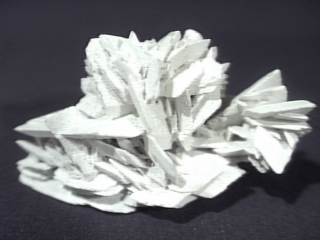 |
ARCANITE
This mineral was first identified in 1845 in the form of yellow crystals in a pine railroad tie in tunnel #1 of the Santa Ana tin mine of Orange County, California. The medieval Latin alchemical name for Arcanite is Arcanum duplicatum, which means “double secret,” perhaps suggesting that the mineral can only be found in hidden places. This unusual name is no doubt responsible for fictional “uses” of arcanite elaborated in fantasy novels, where arcanite is described as the best possible material for making magic swords, chain mail, etc. Readers of such stories might be surprised to find that the most likely origin of arcanite is bat urine.
|
Previously,
arcanite had only been identified in five caves around the world, all of them
in Africa. Prof. Forti’s team, however, found it in four different samples
taken from Hibashi Cave, an extensive lava tube in Harrat Nawasif-Buqum,
where we have had many an adventure...
|
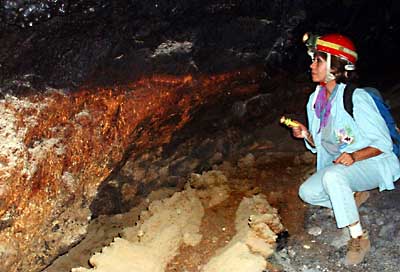 |
PALYGORSKITE
Palygorskite is a clay which is not only rare, but also quite funny looking. Here is a photo of it, courtesy of mineral.galleries.com, plus a description of it taken from Cave Minerals of the World by Carol Hill and Paolo Forti:
"This palygorskite is dark, spongy and slimy, rather like wet leather or fungus, and for this reason it is sometimes called “mountain leather” by cavers.
In the caves of the Pend Oreille mining district, northwestern Washington, palygorskite has also been reported as a leathery deposit and was described humorously by Frost (1971):
White to dirty gray in color resembling crumpled dirty rags or saggy chewed up cardboard… The grimy cloth-like appearance creates interest amongst the miners, one of who told me that he made a pair of underwear out of the stuff."
Palygorskite, however, is useful for something far more aesthetic than underwear…
THE MYSTERY OF MAYA BLUE
According to researchers in the department of chemistry at the University of Texas, El Paso, palygorskite is the secret ingredient that allowed the Mayan Indians to produce a blue pigment of great beauty and unprecedented resistance to acids, alkalis, solvents and biodegradation. The origin of Maya Blue, as it is called, escaped experts for years...
|
...People thought the origin of
Maya Blue was copper or
lapis lazuli, but in reality, the Mayans had discovered a still unknown way of
synthesizing this paint from palygorskite and indigo. Only with the help of
powerful synchrotron x-rays have researchers discovered that the indigo is
actually inserted into the channels of the palygorskite clay structure,
affording the paint its unusual stability...
Photo courtesy of Justin Kerr, The Kerr Collections, Foundation for the Advancement of Mesoamerican Studies, Inc. (FAMSI). © Justin Kerr.
|
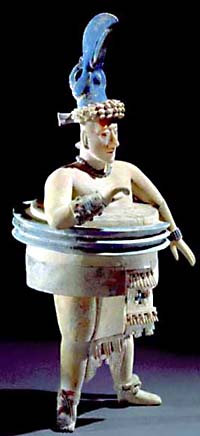 |
MINERAL SOUP
Of particular interest to mineralogists is the great variety of minerals found inside Hibashi Cave. So far, thirteen minerals have been identified, the majority of them considered rare in caves.
The list of Hibashi minerals begins with the nearly unpronounceable mineral aphthitalite, a rare, natural soluble sulfate discovered in 1835 at Mt. Vesuvius. At the end of the list is whitlockite, a rare phosphate mineral which has been found in Martian meteorites and in human kidney stones and which takes the form of polished red pearls in some caves.
Here is the complete list of the minerals so far identified in Hibashi cave:
APHTHITALITE
ARCANITE
ARCHERITE
BIPHOSPHAMMITE
CARBONATEHYDROXYLAPATITE
CHLORAPATITE
DOLOMITE
HYDROXYLAPATITE
ILLITE
PYROCOPROITE
PYROPHOSPHITE
UREA
WHITLOCKITE


